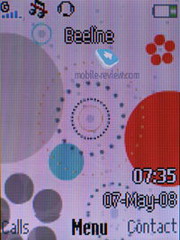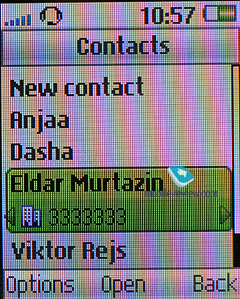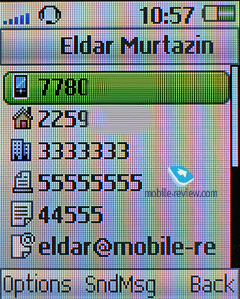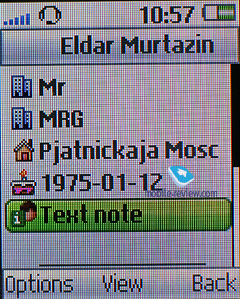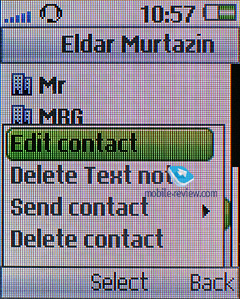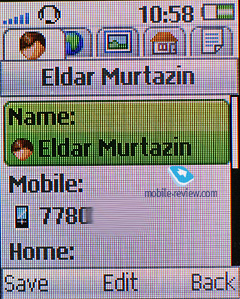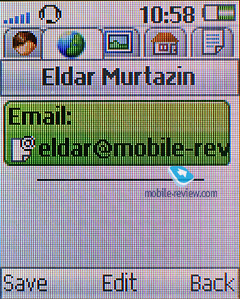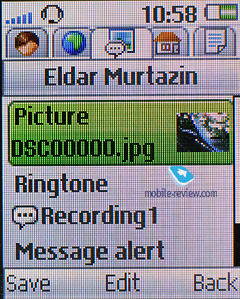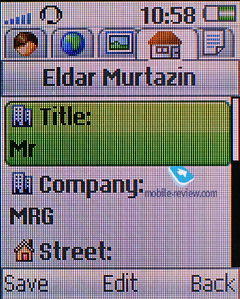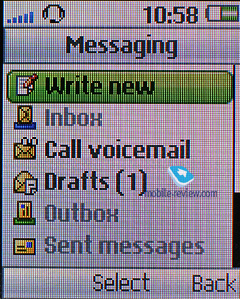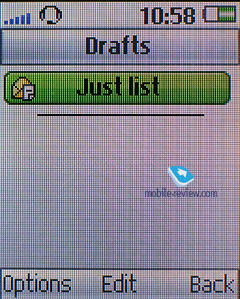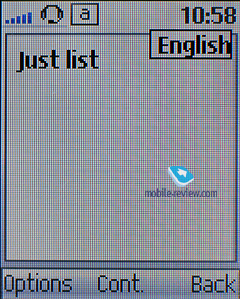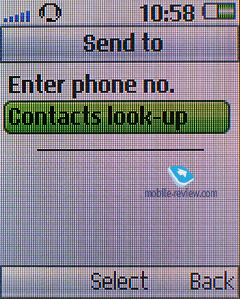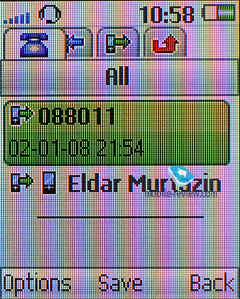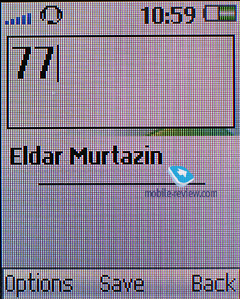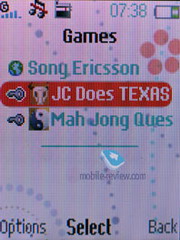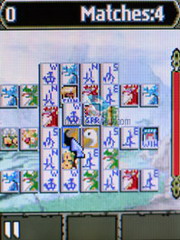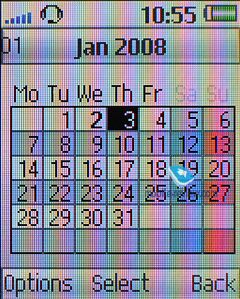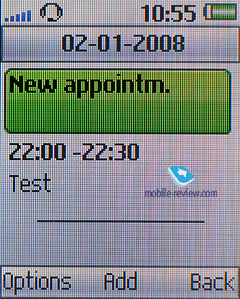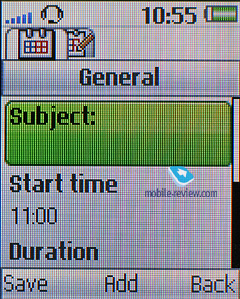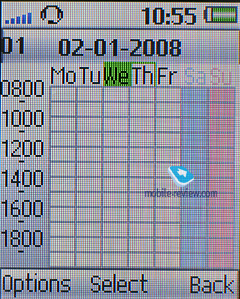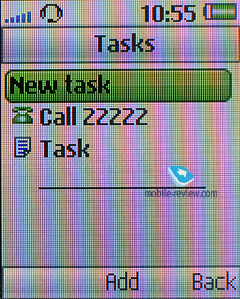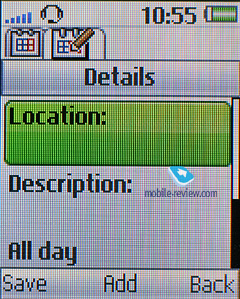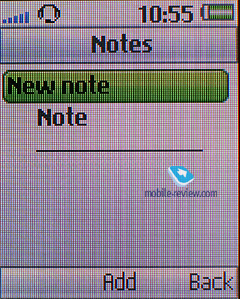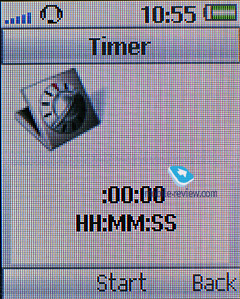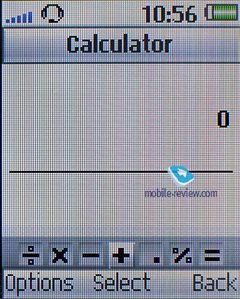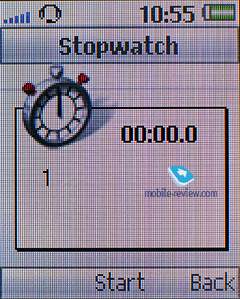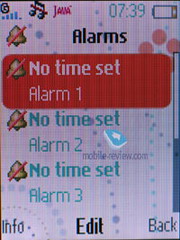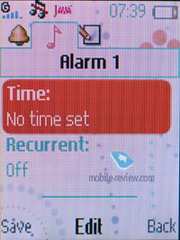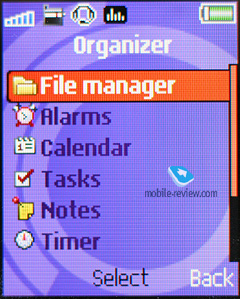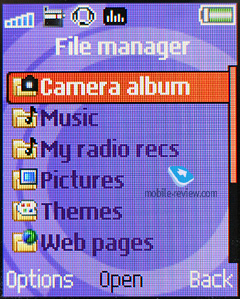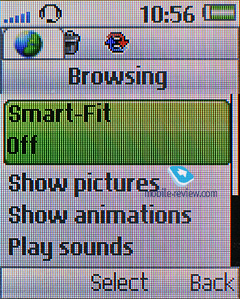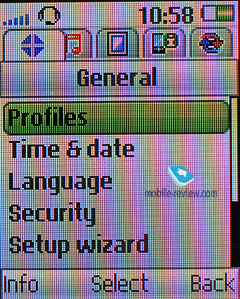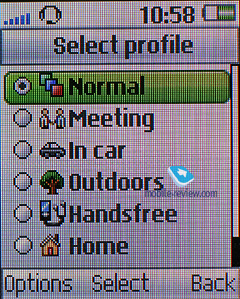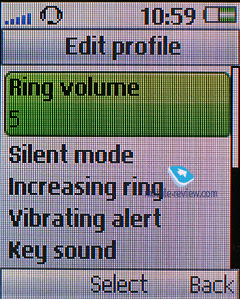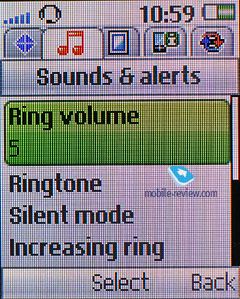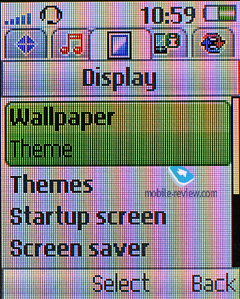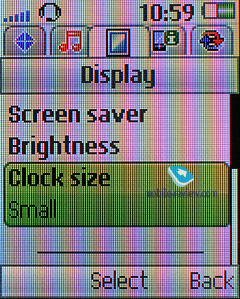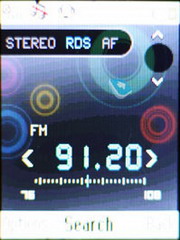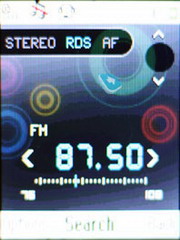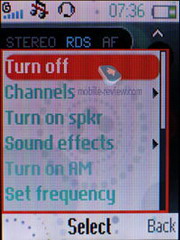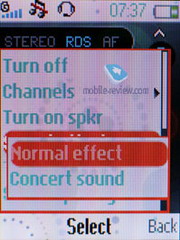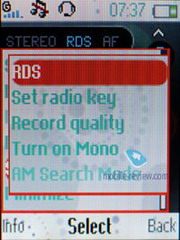Review of GSM-handset Sony Ericsson R306
Table of Contents:
- Positioning
- Design, Size, Controls
- Display
- Keypad
- Battery
- Connectivity
- Memory
- Performance
- Camera
- Menu
- Radio
- Impressions
Sales package:
- Handset
- Battery (BST-38)
- Charger
- Wired stereo-headset HPA-30
- User Guide
Positioning
In our review of the Sony Ericsson's first radio-centric solution, the R300, we ran through the positioning of these phones. Just to recap, they focus entirely on radio, while all other features, including an mp3 player, have been given a short shrift. Last time, our verdict was that very few would actually need such a pared-down phone, also we pondered over whether AM frequencies had to be included or not and if yes then for what regions. Back then we agreed that it was essential only for the North American market, whereas in Europe it wasn't all that necessary.

But while the R300 was nothing to write home about, the R306 is a different creature. In spite of a similar disguise, all R306s are churned out at Foxconn factory, meaning that they bear more resemblance to the A100 platform and have less striking differences from it. It may even seem that they don't have any - seriously, who'd be interested in counting data fields available when creating a contact, or digging into a new web browser? After all, these are all secondary specs of the phone, and its primary feature, radio, hasn't changed a bit.
The R306 isn't much more expensive than the R300, however, for only 15 Euros more you get a more likable form-factor, 1.3 Mpix camera and slightly better software. So, it'd seem that the R306's release date was pushed back relative to the R300 in an effort to give the latter some time to generate some sales, but it's a bit more complicated than that. The reason is that the R306 already has got a worthy rival in Sony Ericsson's own portfolio - the skinny T303 slider. It ships with the same camera, a tad better screen, similar feature pack and boasts a metallic battery cover. Plus it is not much different from the R306 price-wise and has got the radio application too (without AM frequencies, though), which makes it a much better option.

It doesn't take a rocket scientist to figure out which phone is the winner in this case - a lot of people will go for the T303 and won't regret their choices.
All in all, the R306 has been brought about with only one goal in mind - to beef up Sony Ericsson's portfolio. However, it seems they don't have a well-rounded plan and are clueless about its target audience; so ultimately they are stuck with two similarly geared phones, one of which is quite subpar in more than one way at that.
Back to the table of contents >>>
Design, Size, Controls
The phone comes in a choice of two colors - Lustrous White and Coffee Black. As far as I'm concerned, both trims look pretty decent, plus the plastic doesn't seem all that low-end at all. If there is one area the R306 excels in, it'd be design hands down.
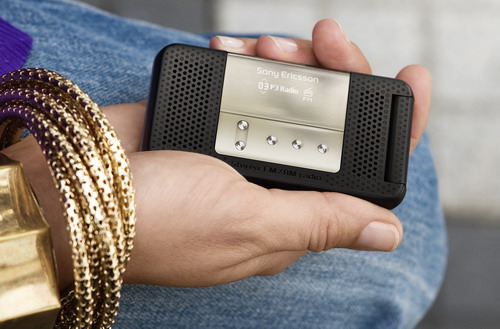

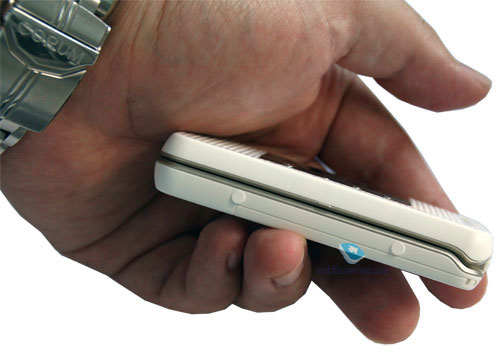
The handset measures in at 90x48x16 mm and tips our scales at 93 grams, which is pretty much what you'd expect from a entry-level solution. The R306 also features a lanyard eyelet, allowing you to hang it around your neck.



Clearly, the R306's front fascia has been designed with radio in mind - it houses three dedicated keys for jumping between saved radio stations and a small one-line display for caller ID and current station name. Perched on the left is the volume rocker, which isn't something you'd expect to find in an entry level phone, Further down, there is the dedicated radio key and Fast Port connector.


The R306 feels very robust in the hand, plus it has a nice mix of materials for the price bracket it's positioned at. Against the backdrop of other lackluster entry-level solutions, it looks like a clear winner.

Back to the table of contents >>>
Display
The R306 employs the smallest display resolution possible - 128x160 pixels - and measures 1.8 inches from corner to corner (28x35 mm, 65 K colors, TFT). Obviously, in view of such a poor spec sheet, it'd be na?ve to expect stellar picture quality from this phone; in fact its adequate brightness level already makes us pretty happy. Needless to say, the R306's screen gets extremely washed out when exposed to direct sunlight.
The screen can accommodate up to 8 text and 3 service lines with fairly small fonts in most modes.
Back to the table of contents >>>
Keypad
The R306 features a W980i-esque keypad, although its buttons aren't nearly as comfortable to type with as those found in Sony Ericsson's music-minded flagship.


Back to the table of contents >>>
Battery
The R306's battery compartment cover is pretty tight, yet easy to open. Sitting underneath is a 930 mAh Li-Pol battery (BST-38), rated for up to 410 hours of standby and 9 hours of talk time.In Moscow the R306's battery time averaged 3.5 days with average use (up to one hour of calls and around 4 hours of radio). The phone can play music for up to 27 hours straight (or 7 hours in speakerphone mode).

It takes the phone around 2 hours to charge from empty to full.
Back to the table of contents >>>
Connectivity
USB
Once you have hooked up the R306 with a PC over USB (ver. 1.1), all you will be able to do is recharge it and use as a Mass Storage device - no other options, such as Modem or Media sync are available.
Bluetooth
Unlike A100/A200-powered phones, the R306's Bluetooth 2.0 doesn't support EDR. There is also A2DP support, which allows employing wireless headsets with the R306. The list of supported profiles:
- Basic Imaging Profile
- Basic Printing Profile
- Dial-Up Networking Profile
- File Transfer Profile
- Generic Access Profile
- Generic Object Exchange Profile
- Handsfree Profile
- Headset Profile
- HID
- JSR-82 Java API
- Object Push Profile
- Serial Port Profile
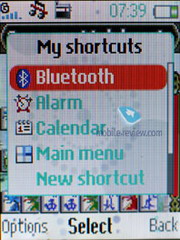
Back to the table of contents >>>
Memory
The R306 comes with around 8 Mb of user-manageable memory and no memory expansion slot, meaning that the user will be stuck with this paltry storage.
Back to the table of contents >>>
Performance
The R306 proved to be a pretty speedy device; we didn't run into any freeze-ups or major hiccups in its software.
Back to the table of contents >>>
Camera
The handset comes equipped with a very basic 1.3 Mpix camera that sports a bunch of extra settings, and generally snaps pretty good photos for an entry-level solution. It can also record video clips.

Sample images:
 |
 |
| (+) enlarge, 1280?1024, JPEG |
(+) enlarge, 1240?1024, JPEG |
 |
 |
| (+) enlarge, 1280?1024, JPEG |
(+) enlarge, 1240?1024, JPEG |
 |
| (+) enlarge, 1280?1024, JPEG |
Back to the table of contents >>>
Menu
While the handset's interface is a close sibling to that found on other Sony Ericsson branded phones with its three-button layout, the R306 can't multitask (although you can have one Java application running in the background) and offers only one main menu view (a grid).
Much like the W302, the Sony Ericsson R306 utilizes A050 platform, although it has been slightly tweaked in more than one way.
Phonebook You can run a first-letter search in the phonebook. When hovering over a contact you will see its default number, pushing the navigation key left and right will scroll through other phone numbers assigned to it. You can submit as many as 500 entries.
When submitting a new contact, you will be offered only one field - Name. You can throw up to five numbers into any entry, all fields are hardwired into phone, these are Home, Mobile, Work, Fax and Other; so you won't be able to have two Mobile numbers. Extra fields include one email addresses, one web site link, picture, personal tune, company name and a custom message alert. The good thing about the R306 is that you can set up an automatic reminder in the calendar when submitting a birthday date.
The R306's contact groups can serve only for bulk mailing purposes - you won't be able to set a picture or ring tone for them.
Also there is the Smart Search feature that makes the phone look in the contact list for phone numbers you type while at the standby screen.
Messaging The R306's messaging interface couldn't be simpler, furthermore, there are almost no extra settings, and basically the only thing you can do with it is format text (EMS). The phone also allows for a couple of customizable templates. The predictive text input system from Zi Corporation offers a couple of word options at a time in a drop-down list.
?The MMS editor is nothing to write home about. On balance, the R306's messaging department is very much in line with that found in A100-powered phones.
Call lists. The general list contains up to 30 entries with special notes on call's date and time. Standing next to every entry is a thumbnail indicating call type (missed, incoming, outgoing). Apart from that, the list also houses some extra icons, such as those showing whether the phone number in question is stored in the handset's memory or SIM card. You can check out missed calls in a separate list (up to 10 entries). All call lists are organized in a couple of tabs, which save a lot of time as far as navigation goes.
Entertainment. This section features a couple of games (JC Does Texas, QuadraPop), TrackID service, and the voice recorder without any clip length restrictions (although you won't be able to squeeze much into the phone's tiny 8 Mb storage anyway).
OrganizerThe Organizer menu has got a lot of functions underneath. Let's get Calendar out of the way first. There are three view modes embedded in the R306's calendar: weekly, monthly and daily. The last option displays the list of all events and memos, in two others you will see highlighted time or day. You can also switch to any day and year, or month, everything is pretty straightforward, just as the schedule input is. You can name an event, define the place where it is set to take place, adjust its length and setup a reminder (before or right at the start of the event). Recurrent events support is also onboard. Types of reoccurrence: daily, monthly, yearly. Reminders work even if the phone is turned off as well, unless you disable this function.
Tasks - nothing to write home about here, you can either make text or voice memos.
The calculator is thin on features as well.
The countdown timer and stopwatch are both pretty standard.
Memo - this application allows making bog-standard text notes.
Alarm clock - you can have up to 5 fully-customized alarms.
File manager - the R306 ships with a very basic file manager, but since it doesn't support memory cards, there is not much use in a file manager anyway.
WAP. The phone comes preinstalled with a no-frills NetFront browser that allows resizing webpages, so that they will fit the screen size. All in all, this browser is a standard Sony Ericsson fare.
Settings. The number of available options has significantly decreased as compared to any A100-powered handsets - there are some themes in the R306, but nothing special about them and you can't upload new ones; sound themes aren't customizable either, and on top of that, the Settings menu is the only place you can switch your current sound profile from.
Back to the table of contents >>>
Radio
At last we have come to the R306's bread and butter department. Apart from FM frequencies, the phone can also tap into AM stations, but it's still unclear who will actually use it. In my opinion it will end up overlooked in most regions.

As far as the R306's shortcomings go, it can only store up to 20 FM stations in the memory; but this limitation is not bad in itself. The most unpleasant thing about all this is that now that Sony Ericsson have kicked up the phone's radio sensitivity a tiny bit, it can tune in to more stations, so we used up this smallish capacity way before reaching 100 Mhz frequency. I suppose you'd agree that in view of the handset's focus, such a restriction looks somewhat odd.
The phone comes armed with RDS functionality, just like most other Sony Ericsson branded solutions do, though. Plus it can record radio broadcast (this ability is enabled only for select markets), but it's not particularly clear why would someone need this feat here, given how little memory the R306 ships with. Using the side-mounted key or via the menu you can apply the Concert effect that will make the sound a bit more punchy. The radio application can also run in background.
As far as the radio controls on the back are concerned, you can bind them both to AM and FM frequencies. We encountered no hiccups with TrackID either - it helped us identify previously unknown tracks.
All up, the R306's radio quality and sound volume are very much in line with other Sony Ericsson's offerings; furthermore, it falls short of UIQ-powered smartphones on this front. So, realistically, this phone isn't much of a revelation in terms of radio experience.
Back to the table of contents >>>
Impressions
Reception quality was never an issue with the R306 - it never dropped off signal in areas with solid reception. Our only niggle is with its radio application - occasionally, when we attempted to switch into AM mode, it crashed and made the phone reboot. Unfortunately, we couldn't figure out why it was doing that. Ring tones sounded pretty clear and were above average in terms of volume; the vibrating alarm was of moderate strength.
The Sony Ericsson R306 easily leaves behind its smaller brother, the R300 on just about every front. On the other hand, it can't compare to the Sony Ericsson T303 in the way of materials and form-factor. So, despite looking somewhat promising, the R306 is very unlikely to appeal to a wider audience. In fact there is a whole lot of folder-type phones other there going for 75-90 Euros, including some gems from Samsung. And let's face it, the R306's design isn't worth those 25-35 Euros they ask for it and very few consumers looking for a phone in this price bracket are going to find it justified. While Sony Ericsson would have been better off marketing the R306 as a very affordable solution, they banked on its design instead and thought a likable wrapping would save the day. Maybe, but the R306 won't climb to the top of sales charts this way.
Related links:
Back to the table of contents >>>
Eldar Murtazin (eldar@mobile-review.com)
Translated by Oleg Kononosov (oleg.kononosov@mobile-review.com)
Published — 24 September 2008
Have something to add?! Write us... eldar@mobile-review.com
|





















